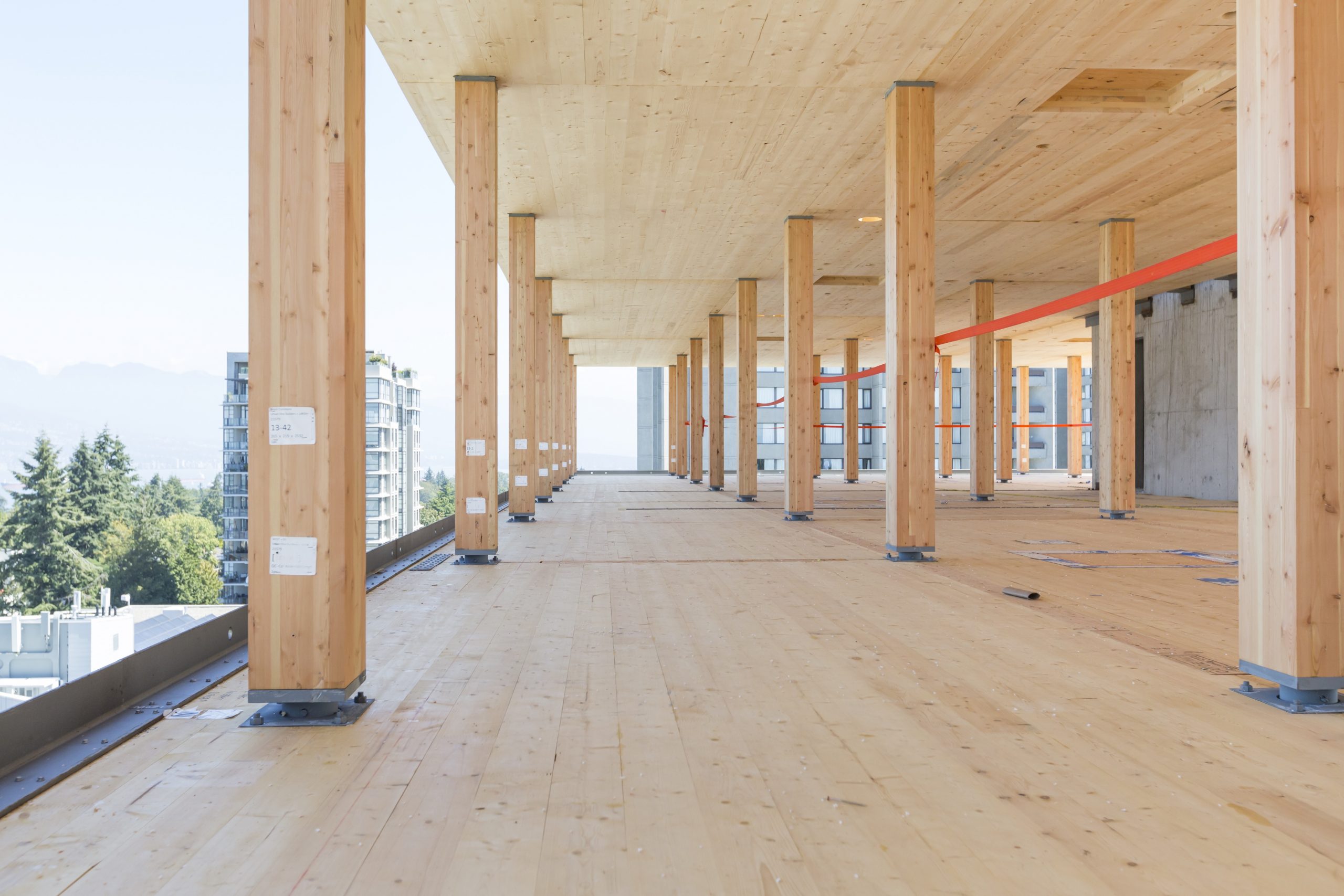The “second life” of trees in supporting a low carbon future
Once a tree is harvested, its second life as a forest-based product begins. Both the living trees and the forest products manufactured can contribute to a low-carbon future and mitigate climate change given carbon continues to be stored in the life of forest products.
Wood products
Harvested timber is converted into a wide variety of wood products. For example, dimension lumber is used in around 90 per cent of new single-family houses in North America. As well, cross-laminated timber (CLT) — consisting of three to seven layers of lumber glued together to create structural panels with exceptional strength and stability — are essential for taller wood building construction. Other products include paper and paper-like products all of which store carbon in the life of the product.
Changing the demand for wood products and keeping carbon out of the atmosphere for as long as possible can consequently have an important role in the global carbon cycle and the fight against climate change.
Products from sustainably managed forests also contribute to a low-carbon future by replacing carbon-intensive, non-renewable construction materials. For example, glued-laminated timber (glulam) is a structural engineered wood product that can reduce the need for construction materials such as steel and concrete. Remote communities can use local forest biomass from nearby harvest areas or from forest thinning activities undertaken to reduce wildfire risks, to produce heat and electricity and offset the amount of fossil fuel historically brought into the community.
Furthermore, the energy and greenhouse gas (GHG) emissions created to produce forest products are less than those of the materials wood often replaces. Canada’s forest products industry has been a leader in reducing GHG emissions from its manufacturing processes. Between 2005 and 2020, the forest products industry in Canada has reduced GHG emission by about 53 per cent. This has been accomplished by replacing fossil fuels used for mill processes with low net-carbon emissions energy generated by burning wood residues, once disposed of by burning without energy recovery.
Repurposing, recycling
After their use, many forest products can be repurposed or recycled, storing carbon after their original use is over, paper products recycling being the best known example. In Canada, about 70 per cent of paper and cardboard are recycled, one of the highest recycling rates in the world. As uses for wood fibre continue to expand — they range from clothing to car parts, from chemicals to advanced construction systems — they provide alternatives that can store carbon and displace more CO2-intensive products. Eventually, the wood and its carbon will reach the end of its life and is disposed.
Disposal and decomposition
Even in disposal, forest products can mitigate climate change, if they are burned to produce energy, thereby displacing fossil fuels, or disposed of in a landfill where methane is captured. Forest products, even paper, store carbon for decades in landfills, where decomposition is slowed by the lack of oxygen.
Even though one of the by-products of anaerobic decomposition is methane, a more potent greenhouse gas than CO2, it can be collected at landfills and burned to produce energy, in turn displacing fossil fuels. Landfill methane collection is not yet universally practiced, presenting a major mitigation opportunity.
Low-impact construction
Wood has long been a popular construction choice because it is easy to work with, durable, safe, comfortable, and beautiful. As concern about the environment grows, more people are turning to wood because it is a natural product that is renewable and recyclable.
Numerous studies have shown that wood products offer clear environmental advantages over other major building products. Wood products require considerably less energy to produce than competitive construction materials such as plastic, metal or concrete, and there are fewer impacts on air and water quality. Extraction costs for wood such as logging and transportation are less than costs associated with mining for metals like iron and aluminum. Recent comparisons show that the production of steel and concrete as building material requires up to two times more energy than wood-based products. Wood is also a natural insulator for temperature and sound. Using wood products has the power to significantly reduce the carbon footprint of buildings.
New technology has increased the efficiency of wood and expanded its uses to taller (up to 18 stories and rising) and larger structures such as commercial, multi-family, education, health, and industrial buildings.
Mass timber construction uses large prefabricated wood members for wall, floor, and roof construction. Some of these products include glulam, CLT, and nail-laminated lumber (NLT). They are diverse with proven performance and safety, showcasing the wide range and variety of opportunities with wood products.
Utilizing the high strength-to-weight ratio of wood, hybrid construction pairs mass timber with concrete and/or steel to create a cost-effective and sustainable building system. These advancements in hybrid building systems have enabled the design and construction of taller wood buildings.
With wood’s ever-growing reputation as a sustainable natural construction and manufacturing material, the world will increasingly turn to Canada’s forests and forest industry for its building needs, in turn supporting our economy.
